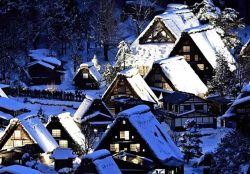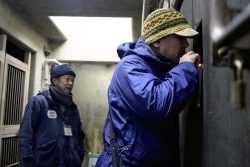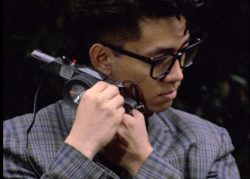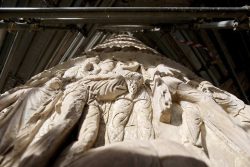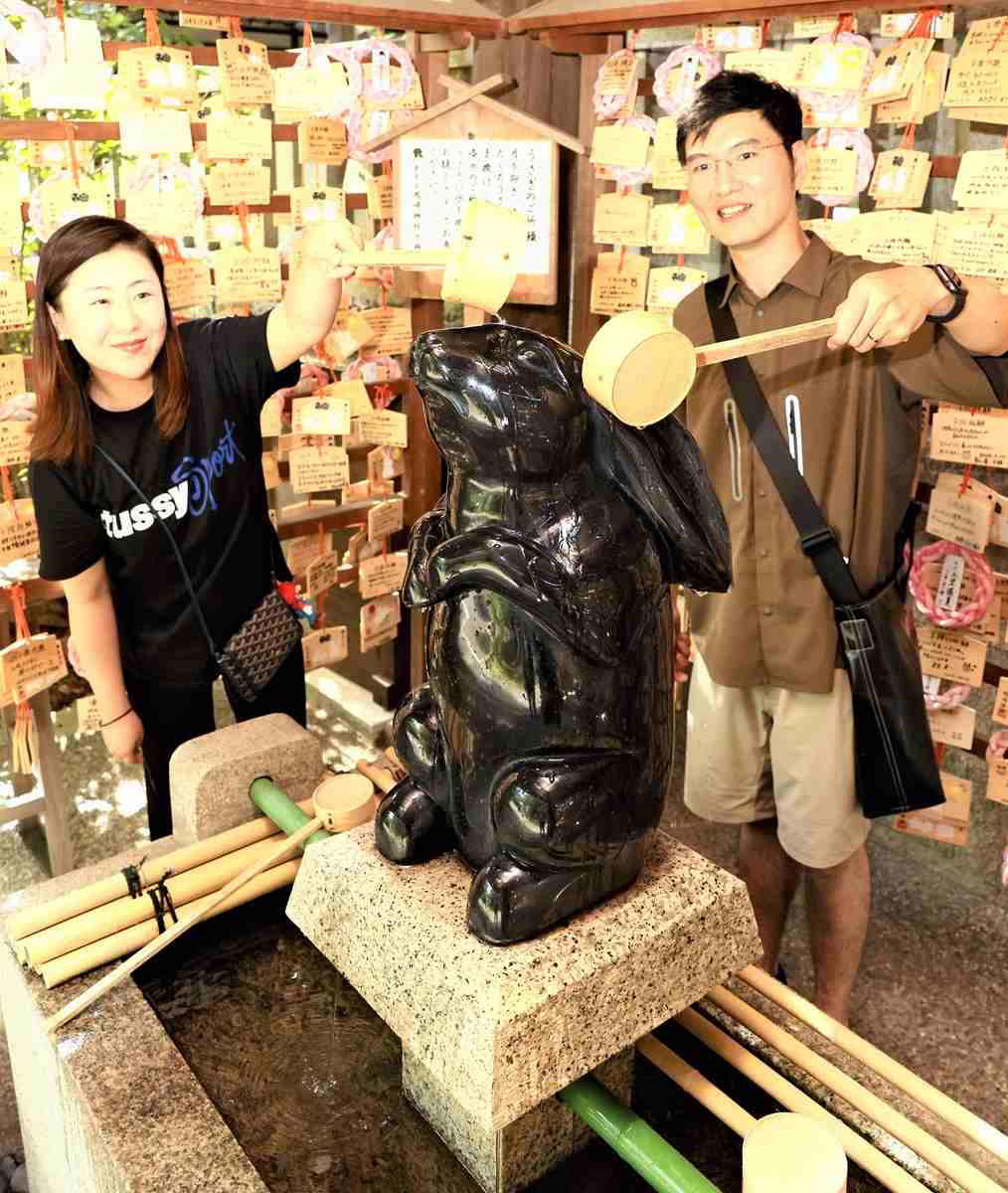
Chinese tourists pour water over the Kosazuke Usagi, a black granite rabbit statue, at Higashi-Tenno Okazaki Shrine in Sakyo Ward, Kyoto.
11:56 JST, September 21, 2024
KYOTO — After entering the grounds of Higashi-Tenno Okazaki Shrine through the torii gate and walking along the stone pavement, visitors are soon greeted by stone rabbits. Usually, lion-dog statues, called koma inu, stand as shrine guardians, but visitors here find a pair of “koma usagi” rabbits instead. Standing on their hind legs with long ears stretching out and bright red eyes, they look adorable.
The shrine is located on Marutamachi Street, one of the main roads running east to west through the center of the ancient capital Kyoto. The shrine has koma inu statues on its grounds, too, but rabbit statues appear one after another. Among these statues are two “maneki” rabbits, which beckon to people and are said to bring money and good luck, as well as a rabbit on a garden stone. Leaping rabbits are also depicted on paper lanterns.
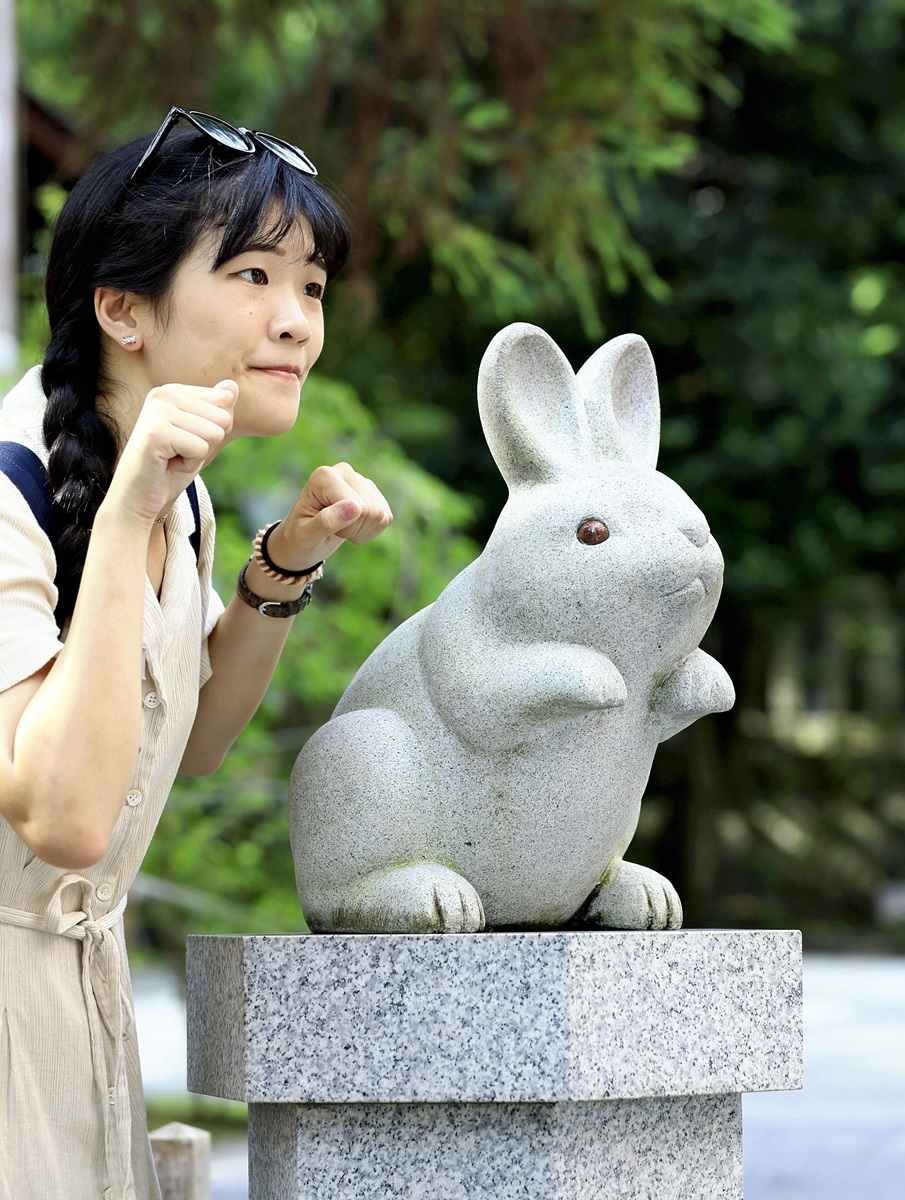
A visitor poses near a rabbit statue. On the grounds of the shrine, there are many such statues that are popular photo spots.
The star of the show, though, is the Kosazuke Usagi, a rabbit statue made with black granite that stands near a purification basin where worshippers wash their hands and mouths, attracting those who wish to have children. Kosazuke Usagi means “rabbit that gives children to people.”
Deities of fertility
Rabbits are fertile creatures, sometimes giving birth to eight babies at a time. This shrine, which dates back to the end of the 8th century when the capital was moved to Kyoto, is in an area that is said to have been a habitat for rabbits since ancient times. People regarded hares running in fields as divine messengers.
The shrine is dedicated to a married pair of deities — Hayasusanoo no Mikoto and Kushiinadahime no Mikoto. They are said to have had eight children and are regarded as deities of fertility in Japanese mythology.
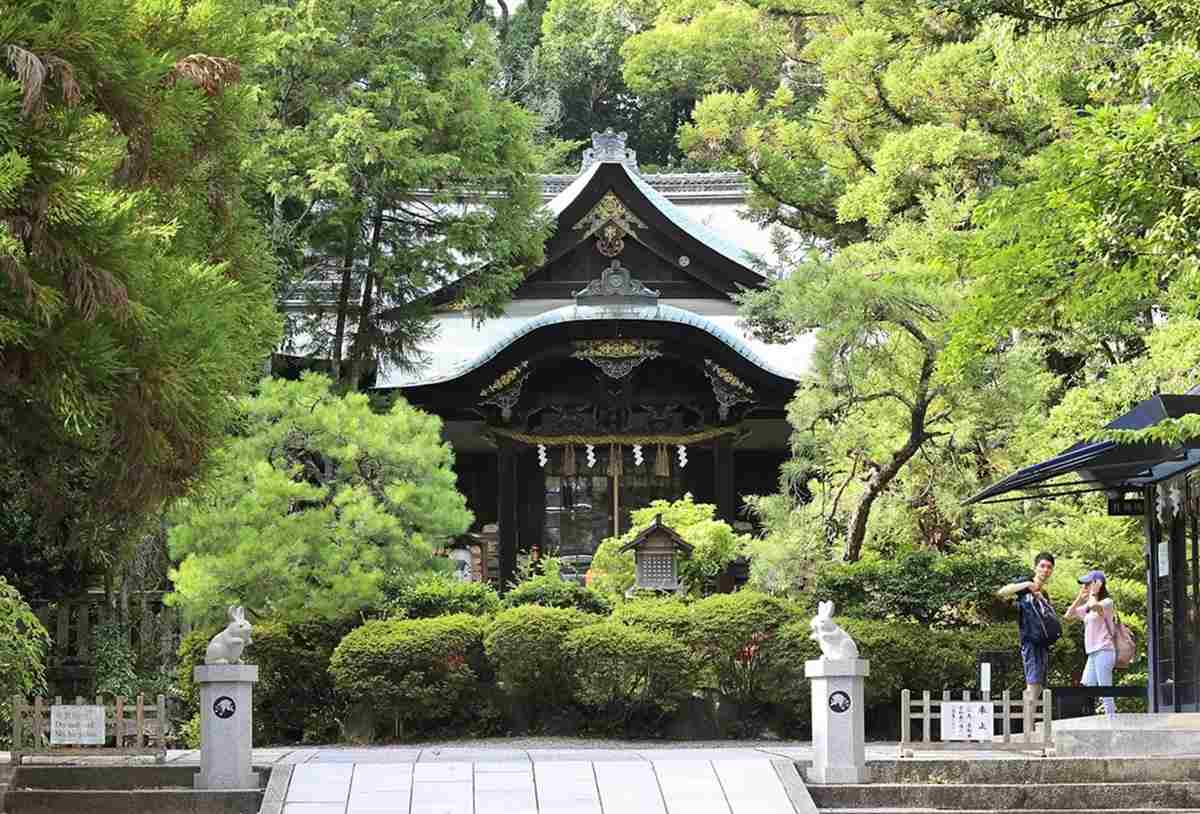
The main shrine hall is seen surrounded by greenery.
The current shrine pavilions and other structures were built in the 20th century, but the mikoshi portable shrines and other items have been preserved since the Edo period (1603-1867) and are decorated with rabbit ornaments. Rabbits were apparently an essential motif at festivals and other occasions at least from the Edo period.
There previously was a bronze Kosazuke Usagi statue, but it was removed as part of a metal requisition during the Pacific War. The current statue was installed in 1997. It is said that if people pour water on the statue with a ladle and rub its belly, they will be blessed with a child, so the shrine attracts young couples.
“After visiting the shrine, some people have children and make another visit for their children. That makes us happy,” said Takafumi Honda, 62, the shrine’s head priest.
Kawaii culture boom
Some families bring small children to see these rabbits, while many foreign tourists stop by after learning about the shrine on social media. Fewer people visited the shrine during the COVID-19 pandemic, but visitor numbers have fully recovered.
“We have visitors from all over Asia and Western countries. There have been more tourist groups these days,” said Mai Toshida, a 24-year-old staff member who works at the reception desk. “Everyone seems to have fun taking pictures and videos of the rabbits. Small rabbit figures with omikuji fortune papers inside them are also popular.”
When it was established, the shrine was originally intended to protect the eastern side of the capital. But today, it is a richly cosmopolitan spot where visitors can experience both Japanese traditions and contemporary kawaii, or cute, culture.
Rabbit charms that come with fortunes
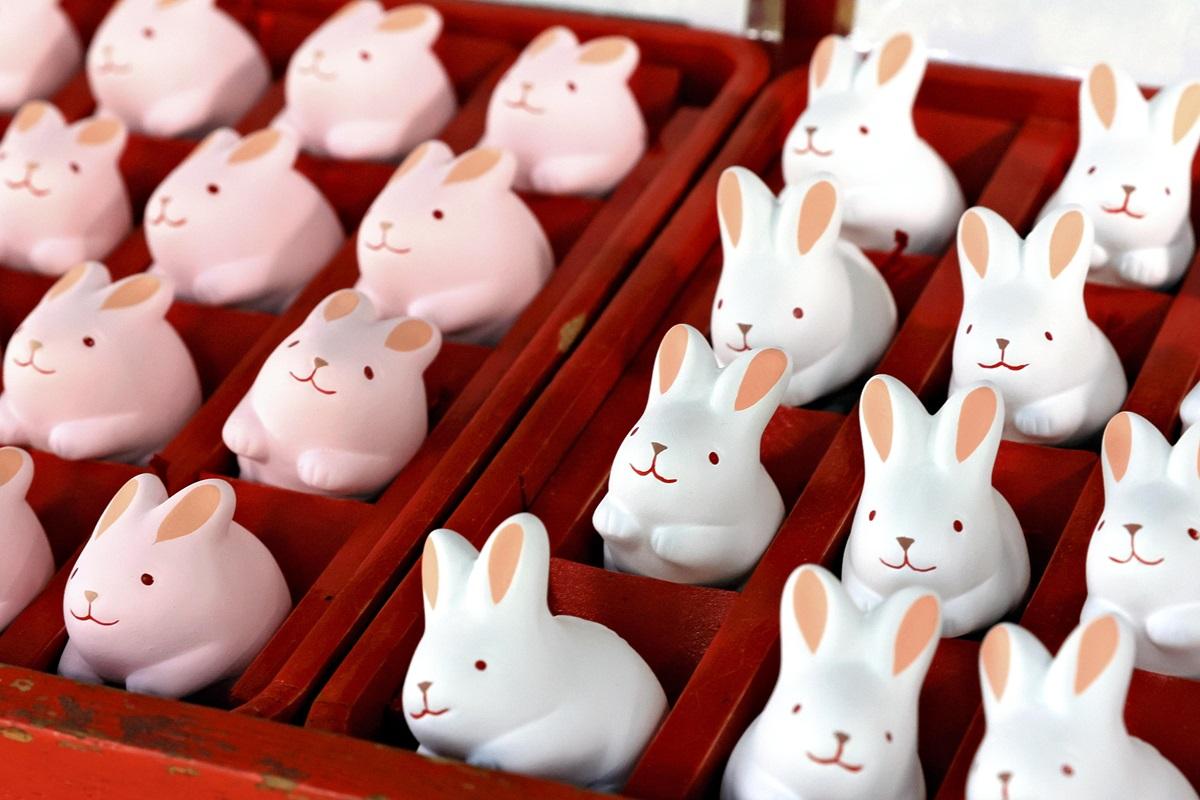
Rabbit-shaped charms that contain omikuji fortune slips
Charms offered at the shrine are all associated with rabbits. One type of charm, a small rabbit figure that contains an omikuji fortune, is available for ¥500. The white and pink figures are made of similar materials to clay bells, which are meant to expel evil. Their cute appearance and the distinctive fortunes that can be found inside them amuse visitors.
Pouch charms with a leaping rabbit design cost ¥1,000 each. These rabbit designs are intended to help people jump over difficulties and hardships. Charms for good luck in marriage and money, as well as for passing entrance exams, are available for ¥1,000 each. They all are adorned with rabbits.
How to get there
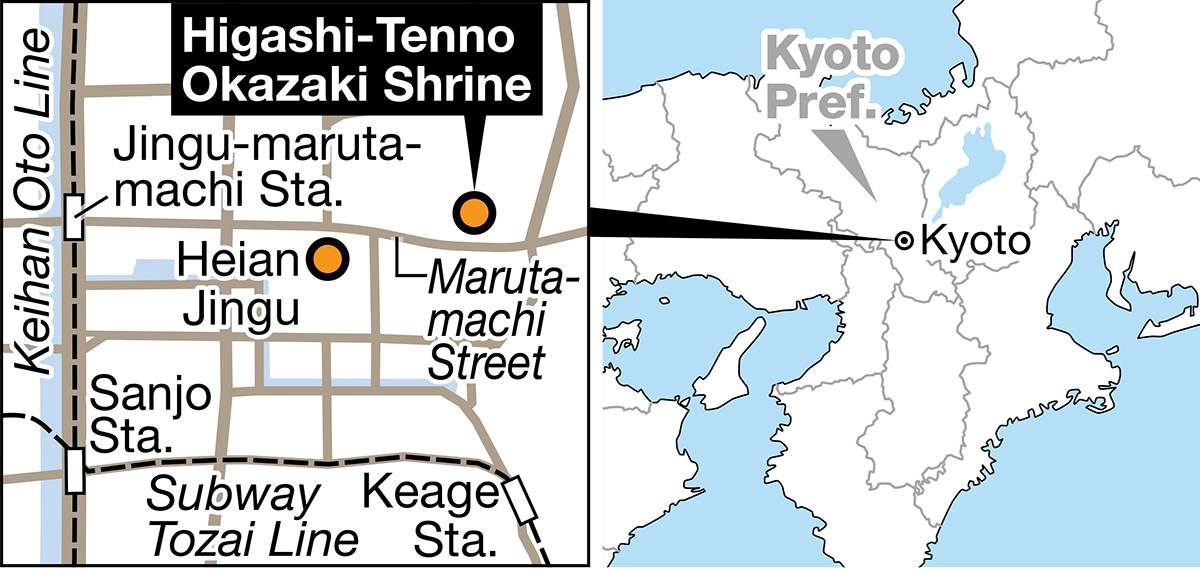
Take a Kyoto City Bus to the Okazaki Jinja-mae stop or Higashi-Tennocho stop. From Keage Station on the Kyoto Municipal Subway’s Tozai Line, walk north for 15 minutes.
Related Tags
"Features" POPULAR ARTICLE
-

Students Recreate 19th-Century Bento Boxes Made for Ino Tadataka’s Survey Team in Hot Spring Town on Nakasendo Road
-

Santa Claus Delivers Christmas Presents to Penguins at Aquarium in Japan’s Nagasaki Prefecture
-
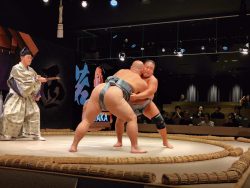
Sumo Restaurant in Tokyo Teaches Foreign Visitors About the Ancient Sport, with Bouts Between Retired Rikishi
-

Autonomous Passenger Ship Connects Mainland with Remote Island in Seto Inland Sea; World’s 1st Commercially Operated Autonomous Vessel
-

Japanese Chef of Italian Restaurant in Tokyo Offers Milanese Risotto; Bright Colors, Rich Flavors in Simple Steps
JN ACCESS RANKING
-

BOJ Gov. Ueda: Highly Likely Mechanism for Rising Wages, Prices Will Be Maintained
-

Japan Govt Adopts Measures to Curb Mega Solar Power Plant Projects Amid Environmental Concerns
-

Core Inflation in Tokyo Slows in December but Stays above BOJ Target
-

Major Japan Firms’ Average Winter Bonus Tops ¥1 Mil.
-

Bank of Japan Considered U.S. Tariffs, Coming Shunto Wage Hike Talks in Its Decision to Raise Interest Rates


